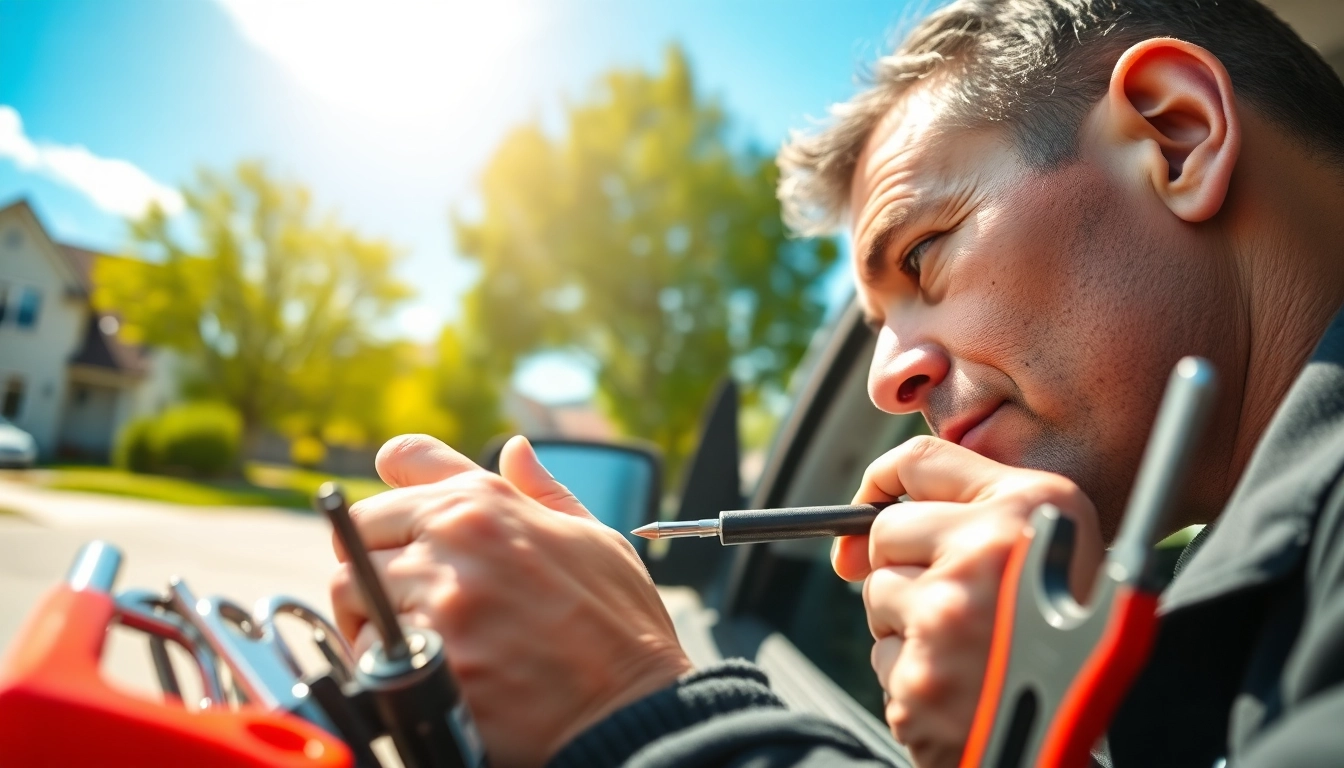Introduction to Keys Locked in Car Situations
Finding yourself with Keys Locked in Car can be a frustrating and stressful experience. It can happen to anyone, whether you’re in a hurry or just a bit distracted. Understanding the problem at hand is the first step in resolving the issue effectively. This article aims to equip you with the essential knowledge and tools needed to handle such unfortunate occurrences, including immediate actions to take, emergency options for assistance, do-it-yourself methods, and ways to prevent future lockouts.
Understanding the Problem
When keys are locked inside a car, it creates not just an inconvenience but can also lead to heightened frustration, especially if you are pressed for time. Commonly, instances of locking keys inside a vehicle can lead to various repercussions, from delayed appointments to missed commitments. Grasping the anatomy of this challenge is vital. A thorough understanding of potential causes, alongside immediate actions to rectify the situation, can save you time and reduce stress.
Immediate First Steps to Take
In the event you find your keys securely locked inside your vehicle, it is essential to remain calm. The first instinct might be to panic or attempt to force entry into your car, but often, there are more effective and safer approaches. Begin by assessing your surroundings: check whether a family member or friend might have a spare key, or if you parked near a location with a public phone or access to a roadside assistance program. Always consider your options and don’t rush to a conclusion blindly.
Common Causes of Lockouts
Understanding why lockouts occur can help prevent them in the future. Common causes include:
- Distraction: A lapse in focus when exiting your vehicle often leads to locked keys. Many people can attest that they’ve walked away, only to realize moments later that they left their keys inside.
- Broken or Malfunctioning Locks: Sometimes physical wear and tear can lead to locks that malfunction or fail to respond correctly.
- Keyless Entry Failures: With the increasing use of electronic keys and fobs, technology can occasionally fail, leading to lockouts.
Emergency Options: Getting Help Fast
Calling for Roadside Assistance
When faced with a lockout situation, one of the quickest solutions is to call for roadside assistance. If you have a membership with an automobile club or your insurance policy includes roadside assistance coverage, this option may come at no additional cost. Roadside assistance professionals typically have specialized tools designed to safely unlock your vehicle without damage.
Utilizing Family and Friends
Another immediate option is reaching out to family or friends. If anyone nearby possesses a spare key or has access to another vehicle that could provide the assistance you need, calling them might resolve the situation swiftly and efficiently. Ensure to provide clear directions if they are unfamiliar with your location, as this can expedite the process.
When to Call a Professional Locksmith
In cases where DIY attempts and roadside assistance prove unsuccessful, or if the situation is urgent — for instance, if there are children or pets locked inside the vehicle — it is advisable to contact a professional locksmith. Licensed and experienced locksmiths are equipped with the necessary tools and expertise to handle lockout situations with minimal risk of damaging your vehicle. Always ensure to verify the locksmith’s credentials and opt for those that provide services specifically for vehicle access.
DIY Methods for Keys Locked in Car
Tools You Might Need
If you’re in a pinch and considering some DIY solutions, there are various tools you might have on hand that can help. The following are common items that could assist in unlocking your vehicle:
- Slim Jim: A thin strip of metal that can be used to manipulate the locking mechanism through the window.
- Wire Hanger: A wire hanger can also be fashioned into a tool for unlocking older models with manual locks.
- Wedge: A small wedge (a thin piece of plastic or wood) can create a small gap in the door frame to insert a tool.
Step-by-Step DIY Techniques
Here are some step-by-step techniques that you can try if you’re comfortable with DIY solutions:
- Using a Slim Jim: Insert the Slim Jim between the weather stripping and the window. Gently maneuver it downwards until you feel resistance from the lock; wiggle it around until you unlock it. This method requires patience and subtle adjustments.
- Using a Wire Hanger: Straighten the hanger with a hook at one end, and insert it into the upper edge of the door frame, aiming for the lock. Once you locate the lock mechanism, carefully move the hook to unlock.
- Using a Wedge: Insert a wedge into the door frame and then use a long object, like a rod or a straightened hanger, to reach inside and unlock the door.
Safety Tips During DIY Attempts
While attempting to unlock your vehicle, prioritize safety:
- Be careful not to damage your vehicle, as this could lead to expensive repairs.
- Ensure the tools you use are appropriate for your vehicle type, as not all cars respond well to traditional unlocking techniques.
- If you feel unsure or overwhelmed, it’s always better to call a professional than risk damaging the car or putting yourself in a dangerous situation.
Preventing Future Lockouts
Creating a Spare Key Solution
One of the most effective ways to prevent future lockouts is by having a spare key. Consider these solutions:
- Key Holder: Establish a safe place for your spare key at home or with a trusted family member.
- Magnetic Key Box: Hide a spare key in a magnetic box secured to an inconspicuous area under the car.
- Smart Key Store: Use Bluetooth-enabled devices to remotely access your vehicle if it’s equipped with such technology.
Using Keyless Entry Systems
Modern vehicles are increasingly equipped with keyless entry systems. These systems enhance convenience but also come with the risk of malfunctions. Investing in a keyless entry system can reduce the likelihood of a lockout situation, as many systems allow you to unlock your car with a smartphone app or Bluetooth connection.
Building Good Habits for Key Management
Developing good key management habits can significantly lower your chances of experiencing lockouts. Here are some strategies:
- Always designate a specific place for your keys at home — a hook, bowl, or drawer can work well.
- When leaving your vehicle, double-check that you have your keys in hand before closing the door.
- Set reminders or alarms on your phone, especially on days when you anticipate being rushed or distracted.
Resources and Additional Support
Finding Reputable Locksmiths
If you require the services of a locksmith, it’s important to find a reputable professional. Consider the following:
- Search online reviews and customer testimonials for local locksmiths.
- Ask friends or family for recommendations based on their experiences.
- Look for services offering 24/7 availability, ensuring they can assist you in emergencies.
Emergency Numbers to Keep Handy
Always have a list of emergency numbers saved on your phone or stored in your car’s glove compartment. Important contacts might include:
- Roadside assistance services
- Reliable locksmiths in your area
- A trusted friend or family member who has a set of spare keys
Useful Apps for Lockout Situations
Consider using mobile applications that can assist you with lockout situations. Many apps are designed to connect you with nearby roadside assistance or locksmith services instantly, or send your location to trusted contacts who can help you.
In conclusion, while having Keys Locked in Car can be extremely distressing, understanding your options can empower you to act swiftly and confidently. By being prepared with tools, knowledge, and good habits, you can alleviate some of the stress associated with car lockouts and prevent them in the future.



